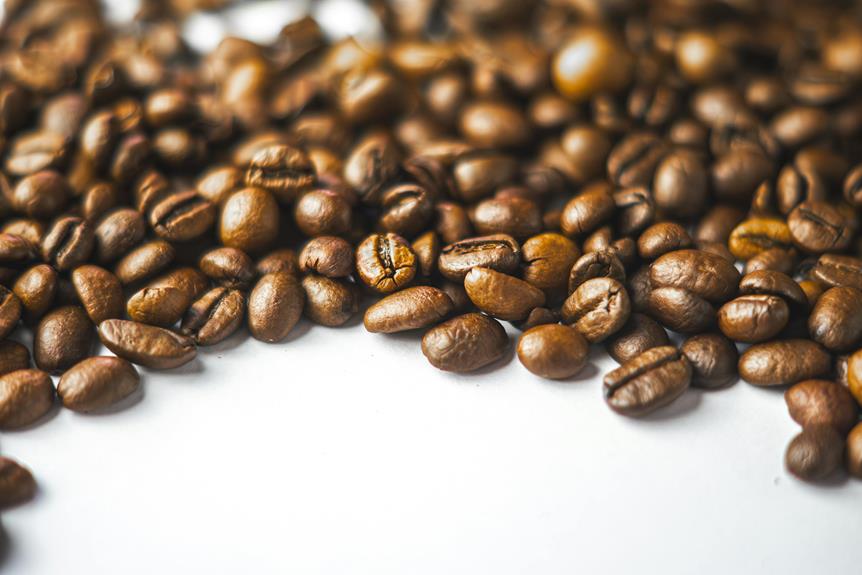
If you've ever found your morning brew taking forever to drip or tasting off, you might have a clogged coffee maker on your hands. The frustration of waiting for that perfect cup to brew can be a real buzzkill. But fear not, there's a simple solution to get your coffee maker back in top form. By following a few easy steps, you can unclog your machine and have it brewing like new again. So, let's get that java flowing smoothly once more – your morning routine depends on it.
Common Causes of Clogged Coffee Makers
If your coffee maker isn't functioning properly, common causes of clogs may include mineral build-up and coffee grounds blocking the flow. Mineral build-up occurs when water with high mineral content evaporates, leaving behind deposits that can clog the small tubes and openings in your coffee maker. This can slow down the brewing process or even stop it completely. To prevent this, it's essential to descale your coffee maker regularly using a mixture of water and vinegar.
Another common issue is coffee grounds getting stuck in the filter or the water tubes. When this happens, the water can't flow properly through the machine, leading to slow brewing or a complete blockage. To avoid this problem, make sure to use the correct coffee grind size for your coffee maker and always use a filter to prevent grounds from entering the machine's internal components.
Supplies Needed for Unclogging
To unclog and fix slow brewing in your coffee maker, gather the following supplies. You'll need white vinegar, water, a clean cloth, a toothpick or paperclip, and possibly a descaling solution if the clog is severe. White vinegar is a key ingredient for breaking down mineral deposits that could be causing the clog.
Water is essential for rinsing out the coffee maker after the unclogging process. A clean cloth will help you wipe down the external parts of the machine. The toothpick or paperclip will assist in dislodging any debris stuck in the brewer's nozzles or tubes.
If the clog is stubborn and mineral buildup is severe, you might need a descaling solution specifically designed to dissolve these deposits effectively. By having these supplies on hand, you'll be well-prepared to tackle the unclogging process efficiently and get your coffee maker brewing smoothly again.
Step-by-Step Unclogging Method
Start by preparing a solution of equal parts white vinegar and water in the coffee maker's water reservoir. Make sure the reservoir is filled to the maximum level for this process.
Once the solution is prepared, turn on the coffee maker and run a brewing cycle without adding any coffee grounds. This will allow the vinegar solution to move through the internal components, helping to break down any mineral deposits or debris causing the clog.
After the brewing cycle is complete, let the vinegar solution sit in the coffee maker for about 15-20 minutes. This will give it time to work on loosening the clog further.
Once the time has passed, run another brewing cycle with plain water to flush out the vinegar residue and any dislodged debris. Repeat this rinsing process a couple of times to ensure the coffee maker is thoroughly cleaned.
Once you've completed these steps, your coffee maker should be unclogged and ready to brew efficiently again. Enjoy your freshly brewed coffee without any slowdowns!
Tips to Prevent Future Clogs
To prevent future clogs in your coffee maker, regularly descaling the machine is essential to ensure optimal performance and longevity. Descaling helps remove mineral build-up that can clog the internal components, such as the water tubes and heating elements, affecting the brewing process. Use a descaling solution recommended by the manufacturer and follow the instructions for the best results.
Additionally, consider using filtered water in your coffee maker to reduce mineral deposits that can lead to clogs. Filtered water helps maintain the internal cleanliness of the machine and improves the taste of your coffee. Replace the water filter as recommended to ensure it's effectively removing impurities.
Cleaning your coffee maker regularly, including the removable parts like the carafe and filter basket, is crucial for preventing clogs. Residual coffee oils and grounds can accumulate over time, leading to blockages in the brewing system. Use warm, soapy water to clean these components after each use, and thoroughly rinse to remove any soap residue. By following these tips, you can help prevent future clogs and enjoy a consistently smooth brewing experience.




